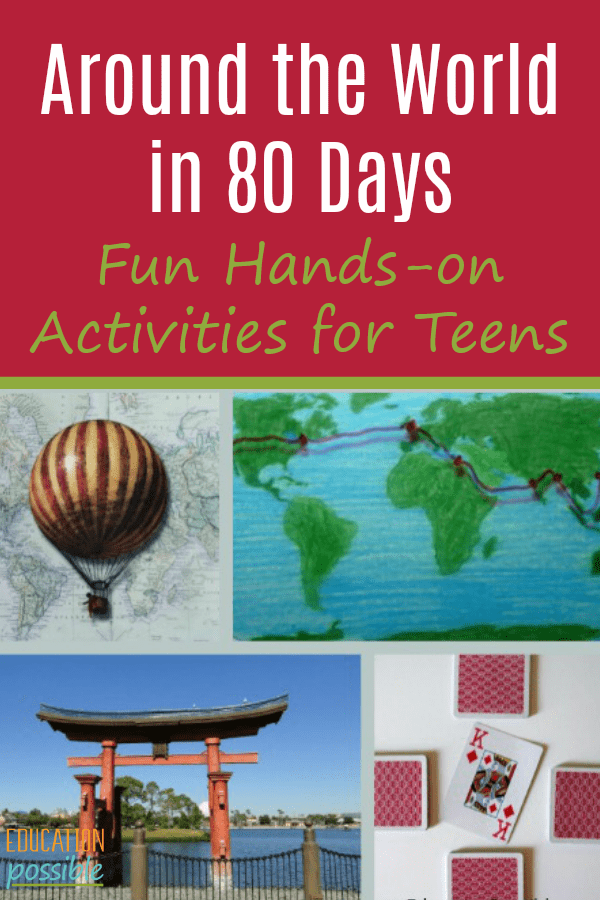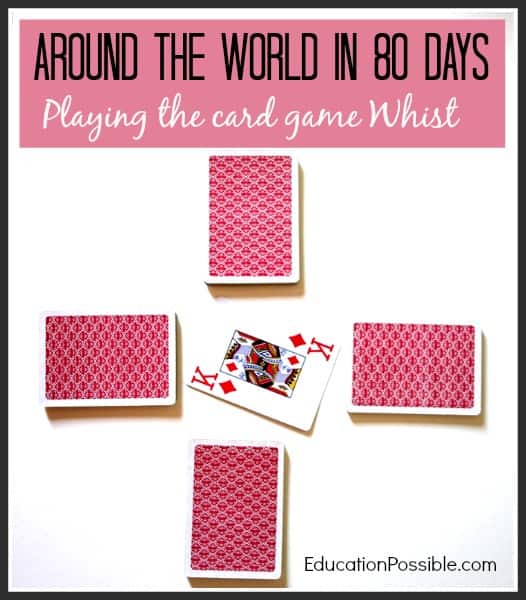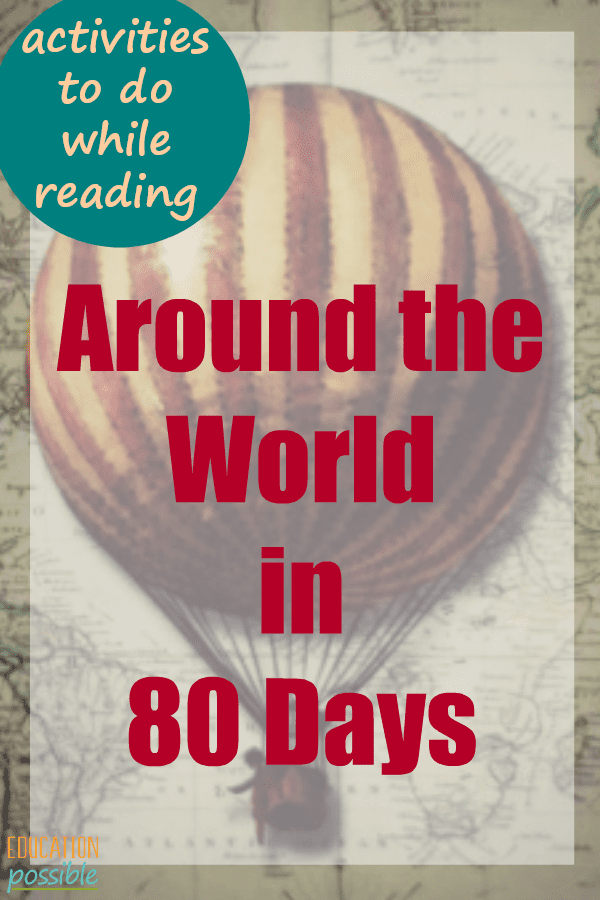Around the World in 80 Days Activities Tweens Will Enjoy
During your next book study, consider adding in some of these Around the World in 80 Days activities.
The Jules Verne classic, Around the World in 80 Days, has long been a favorite in our house. Part of why we love this story so much is that it ties in two of our favorite things, travel and geography. We enjoy reading about an adventure, and this is definitely an epic trip.
When we’re reading books as part of our middle school language arts studies, we don’t want to just read the book, though. We want to make the story come alive with a variety of learning activities.

Any links in this post may be affiliate links. See my disclosure statement.
Around the World in 80 Days Activities
Here are a few of the hands-on activities we included when we read this classic novel. Hopefully, they help you enjoy the journey of Phileas Fogg.
Around the World in 80 Days Game
As this classic story begins, we learn that the main character, Phileas Fogg, is a quiet man who spends most of his days at the Reform Club reading the paper and playing Whist.
My children thought Whist was an interesting word and wondered if the author made it up or if it was an actual card game. I learned through a bit of research that Whist is in fact a real card game and was quite popular in the 18th and 19th centuries.
Our reading took a bit of a detour as we played a few rounds of this fast moving game.
You’ll need playing cards, some paper and a pencil for this game.
How to Play Whist
- This is a 4 player game. Each team comprises 2 players. Members of the same team should sit across from each other.
- Shuffle and deal the cards in this manner.
- The dealer should hand out all 52 cards to the players, one at a time, face down, in front of each person. This means that each player starts the game with 13 cards.
- The last card (essentially the 13th card from the dealer’s hand) is placed faced up in the middle of the players. It is the trump card for this game and should stay where it is until the dealer plays on the first trick. At that point, the dealer will either play the card or add it to her hand.
- Players now pick up and look at their hands. In the game of Whist, aces are high.
- Play begins with the person sitting to the left of the dealer. The starting player takes a card from his hand and puts it in the middle, face-up so the other players can see it. This is how all cards are played. As play moves through each of the 4 players, it’s called a trick. There are 13 tricks in each round.
- The game moves clockwise, and every player lays down a card from their hands, following the suit of the card played first.
- If players don’t have that suit in their hand, they are permitted to lay down a card from another suit, including the trump suit.
- Whoever lays down the highest card from the original suit or the highest one from the trump suit wins that trick.
- At the end of each trick, the winner gathers their 4 winning cards and places them in a pile next to them, face down. As players win more than one trick, they should alternate their stacks to make it easy to count at the end.
- The person who won the trick starts the next one by taking a card from his hand and putting it in the middle, face up. Play continues as before until all the cards are gone.
- When all cards have been played, the teams count the tricks they won during the round. The two player team with the highest amount of tricks wins that round.
- Points – the winning team gets one point for every trick over 6. So if they won 9 tricks in a round, they would earn 3 points. The losing team doesn’t get any points.
- The game continues until a team receives 5 points. At that point, that team wins.
The game is fast moving and a lot of fun. It’s a lot of fun playing as teams.

Phileas Fogg’s Journey Map
Phileas Fogg and his traveling companions visited several interesting cities on their journey. Using a poster sized world map, your family can mark each city along the path of their worldwide trip as you’re reading.
You can either use a laminated map and draw the route using dry erase markers or attach a paper map to a bulletin board and use push pins and yarn to map the journey.
Here is an outline of their proposed schedule:

Around the World in 80 Days Countries
Add some fun writing activities to your book study, like having your teen write profiles of the cities and countries Fogg visited.
The easiest way for kids to complete their research is to use notebooking pages. Notebooking is a great stress-free way to add in some extra writing to any subject.
My favorite resource for this is Productive Homeschooling, formerly Notebooking Pages, because of the large variety of high-quality pages available. If you don’t want to use their country study, feel free to make your own. You just need a way for your teens to capture a variety of information about the locations.
To complete the profiles, encourage your teen to use a student atlas and world almanac. This would be a fun way to teach geography to middle schoolers. They’ll be learning geography and working on their map reading skills.

Take A Virtual Field Trip
You may not be able to set off on a trip around the globe, but thanks to technology, you can visit anywhere you’d like from the comfort of your own home by taking virtual field trips.

Hopefully, these hands-on activities will get your teen excited to read about Phileas Fogg’s fantastic journey.
Resources for an Around the World in 80 Days Unit Study
- Around the World in 80 Days by Jules Verne
- Wall map poster to chart your journey
- Push pins to keep track of your stops along the way
- A student atlas so you can learn more about the locations in the book
More Books and Fun Activities for Tweens
- Complete an art project and answer some discussion questions as you read The Giver.
- Try your hand at weaving or draw a life size longhouse during while reading The Indian in the Cupboard.
- As you read The Red Badge of Courage, you can make some food from the time period and complete a creative writing activity.
Which one of these Around the World in 80 Days Activities will you do first?


My son just started reading this the other day! How serendipitous! Thank you!